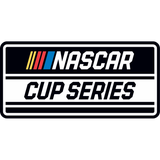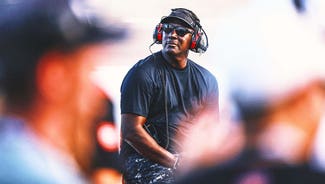
As NASCAR season approaches, plenty of questions have yet to be answered
By Bob Pockrass
FOX Sports NASCAR Writer
CONCORD, N.C. — A new year always brings new questions, but as the calendar is about to turn from 2021 to 2022, NASCAR has many questions that need to be answered before the green flag drops for the Daytona 500, let alone the season.
Most, but not all, have to do with the Next Gen car.
The Next Gen car has been in development for a few years, but there has been a scramble to get it ready for its debut. That has created a mix of anxiety, frustration and hope.
Any project is going to have issues, but there is an undercurrent in the NASCAR garage that NASCAR should have been more aware of potential heat and handling issues with this car. Some of the angst could be attributed to frustration about a car for which most of the parts and pieces come from vendors, putting team innovation at a minimum and resulting in teams cutting back in their fabrication and other departments.
But there are a few questions that linger:
Q: Will 670 horsepower be the right move?
NASCAR Executive Vice President Steve O’Donnell said NASCAR likely will go with 670 horsepower at all tracks except Daytona, Talladega and Atlanta (Atlanta because of a repave and configuration that could make it race more like a superspeedway).
Originally going with 550 horsepower at ovals more than 1.4 miles in length, NASCAR couldn’t ignore driver complaints and the lackluster results that officials saw in test runs.
NASCAR has said over the past few years that its move to 550 horsepower was done to encourage interest from new manufacturers, making this seem like a dramatic shift. But O’Donnell indicated that the change won’t impact that hope as it seeks a new manufacturer (often called an OEM — original equipment manufacturer).
"If we go 670, that’s absolutely within a range to attract a new OEM," O’Donnell said. "We’ve had discussions with a number of new OEMs, and that factors within that, so that wouldn’t be a detriment to someone coming into the sport."
It certainly appeared to be the right move last week at the Charlotte test. The only question is whether it will use a 6-inch spoiler or a 4-inch spoiler. Drivers liked the 4-inch spoiler, which also will be used at short tracks and road courses.
"When you take [the] spoiler out, you’re taking drag out, and it’s essentially adding horsepower [in feel] to the car," driver Joey Logano said. "I think the [4-inch] one was the best one. I think everyone in the [driver] room probably agrees with that.
"The cars were using three lanes in Charlotte. We haven’t used three lanes in Charlotte in years. I think that was a gain. Tires fall off super hard. It’s kind of everything we’ve been asking for."
NASCAR might not be convinced — they have concerns that restarts won’t be as dicey — but might go with what drivers want because they need driver support for the new car to encourage fans to watch.
The difficulty is that all tracks are different, so what works at one track won’t work at all. For instance, NASCAR’s "Car of Tomorrow" did not race well at Auto Club Speedway in California, but the Gen-6 car (the more recent one) put on solid races at the track.
"We’re going to have an issue somewhere," driver Brad Keselowski said. "We all know that. We don’t like it, but we all know that. ... There’s going to be tracks that are awesome with this car, and there’s going to be tracks that are going to be like, ‘Aw, man, I don’t know about this.’
"That’s part of life. ... Do I know which ones right now? I don’t."
Q: Will there be enough cars?
Having tweaked the chassis design over the past two months, as well as adjusting various parts and pieces to help with aerodynamics, heat issues, steering issues, etc., NASCAR again is facing questions about whether teams will have enough parts and pieces to assemble cars.
Teams will be limited to seven cars per car number (a four-car team, for instance, can have 28 cars) and must race cars three times before they can be replaced (unless they crash).
O’Donnell said he believes teams will have five completed cars by the start of the season. Will that be enough for teams to get through Daytona (where crashes are common) and three consecutive weeks on the West Coast (where there is limited time to get new cars assembled and/or shipped)?
"We believe that will be a sufficient inventory to get us through the first quarter of the season," O’Donnell said. "Then we’ll continue to build and learn. ... It’s a new culture for us."
The idea is to make the driver, crew chief and pit crew have more of a direct impact on the result, rather than an engineer designing a part or a setup.
"We don’t want to be in the parts manufacturing business," O’Donnell said. "We don’t want to be in the wind tunnel [time equating to] winning races business. We want to see people get out there and perform on the track."
Q: When will the L.A. Coliseum track be ready?
NASCAR is set to break ground on the new track this week. Well, it’s not really breaking ground so much as putting a protective covering over the Los Angeles Coliseum surface, putting down layers of dirt and then pouring asphalt to create a quarter-mile track.
There also will be protective fencing added as NASCAR prepares for its preseason Clash, scheduled for Feb. 6. The Clash is an exhibition race that was traditionally held at Daytona, but NASCAR will try to generate enthusiasm for the new car by running the weekend prior to the Super Bowl in one of the country’s biggest markets.
If this experiment works, it could lead to NASCAR doing similar events at other venues in the future.
Q: What will penalties be?
Because most of the Next Gen parts and pieces are coming from NASCAR-specified vendors, NASCAR will revise its penalty structure to make sure that teams are not making modifications.
NASCAR has not announced what changes it will make, but there has been speculation that it could ban drivers from the playoffs if teams are caught messing with certain elements.
"Penalties will be ratcheted up," O’Donnell said. "We’re hopeful we don’t have to do that. We have put everybody on notice [that] this is a culture shift. ... Certainly, everything is on the table in terms of playoff points.
"We want to make sure that the penalty matters."
Q: What seats are left to be filled?
In non-car news, only a few chartered teams have yet to announce who will race for them in Cup next year.
Spire Motorsports has a second car that is looking for a driver as a teammate to Corey LaJoie. Rick Ware Racing has not announced plans for its two cars.
Live Fast Motorsports has not made any official announcements, but team co-owner Matt Tifft confirmed that the plan is to continue as it did in 2021, with co-owner B.J. McLeod driving most of the races unless there is a sponsor-driver combination that makes sense for the team.
Of the top 30 Cup drivers from last year looking for rides, Ryan Preece has had the most talks, with his likely landing spot a potential mix of series and teams. The futures of Matt DiBenedetto and Ryan Newman are less certain.
Looking for more NASCAR content? Sign up for the FOX Sports NASCAR Newsletter with Bob Pockrass!
Thinking out loud
Kaulig Racing’s decision to put Daniel Hemric and Noah Gragson in its second Cup car along with AJ Allmendinger tosses any driver championship hopes out the window.
And that’s OK. It's probably even a good thing.
For a new team, not worrying about points can be a huge benefit. The team can go for wins at tracks where it thinks it can win (i.e. Allmendinger at every road course) and experiment with its setup or use an alternative strategy at others.
All three drivers will get significant track time as they all compete for the Xfinity Series title (Gragson at JR Motorsports and the others at Kaulig), and they can gain Cup experience without all the Cup pressure. They also can use one another as a way to measure their success.
With Justin Haley driving the team’s other Cup car for a full season, Kaulig didn’t need a second car to worry about points. They need to worry about getting better and seeing what works. This trio of drivers will allow them to do just that.
Social spotlight
Stat of note
Sixteen drivers made their NASCAR Cup Series debuts in 2021:
— Daytona 500: Anthony Alfredo, Chase Briscoe, Austin Cindric
— Daytona road course: Scott Heckert
— Bristol dirt: Stewart Friesen, Shane Golobic, Mike Marlar, Chris Windom
— Talladega (April): Harrison Burton
— Kansas (May): Matt Mills
— Dover: Josh Berry
— COTA: Kyle Tilley
— Sonoma: Ben Rhodes
— Road America: Ryan Eversley
— Watkins Glen: RC Enerson
— Charlotte road course: Joey Hand
They said it
"I’m happy. I’ve got the same [new] one on my belt. ... I’d rather not get into [what happened]." — Brad Keselowski on not being able to keep the Penske font for his nameplate above the window of his car after his move to what is now Roush Fenway Keselowski Racing
Bob Pockrass has spent decades covering motorsports, including the past 30 Daytona 500s. He joined FOX Sports in 2019 following stints at ESPN, Sporting News, NASCAR Scene magazine and The (Daytona Beach) News-Journal. Follow him on Twitter and Instagram @bobpockrass. Looking for more NASCAR content? Sign up for the FOX Sports NASCAR Newsletter with Bob Pockrass!




